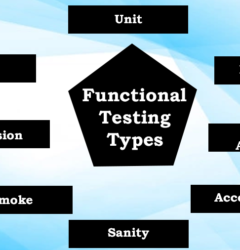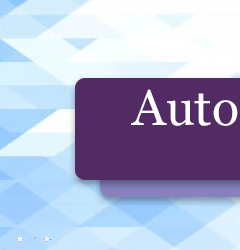16 Mar

What is Manual Testing?
In the software testing process, test cases are executed manually without using any automated tool called Manual Testing.
Manual testing approves the conduct of an application against the predetermined necessities. It can likewise go about as an end client for investigating the application by assuming responsibility for the usefulness since necessities are not generally reported.
When utilizing the exploratory testing method, an analyzer can get to grasps the item and configuration of most experiments by approving the end-client necessities. This article decides to portray various kinds of manual testing, however before we dive further into this, let us see some manual testing foundation.
Types of Manual Testing
Different Types of Manual Testing are as below:- Smoke Testing
- Cross-browser Testing
- Acceptance Testing
- Beta Testing
- Exploratory Testing
- Negative Testing
Types of Manual Testing in brief:
1) Smoke Testing:
Smoke testing is a significant level kind of manual testing used to evaluate whether the product adjusts to its essential targets without basic deformities. Smoke testing is a non-thorough methodology since it is restricted to checking just the center usefulness of the product.
Smoke testing is frequently used to check a fabricate once another usefulness has been presented in a bit of programming. The QA group normally figures out which parts of the product should be surveyed prior to running different smoke tests in a suite.
2) Cross Browser Testing:
There is no assurance that a site will appear to be indistinguishable from each program on the grounds that every program may react contrastingly and render the page as per its own understanding. These factors make it very significant that cross-browser testing is performed before a site is brought to creation. Cross program testing is led to guarantee a predictable encounter across all programs.
Starting cross-browser testing towards the finish of the advancement cycle is ideal, so most, if not all, center usefulness can be surveyed for how they render across numerous internet browsers. Cross-browser testing is normally directed by the QA group or potentially architects. Since the planning group is personally acquainted with each pixel, it tends to be valuable to have them included.
3) Acceptance Testing:
Discovering bugs is the focal point of most sorts of manual testing, however, Acceptance testing is unique. The inspiration driving affirmation testing is to reveal how eagerly the application changes with the customer’s necessities and suppositions and is much of the time insinuated as User Acceptance Testing or UAT for short.
Acceptance testing is performed once all bugs have been tended to. The item ought to be market-prepared during acknowledgment testing since this kind of testing is intended to give the client an away from how the product application will look and act, in actuality. Acknowledgment testing ought to be finished by the customer or a genuine client of the item. It is quite possibly the main sort of testing since it is performed after the turn of events and bug fixes, as the last testing measure prior to going into creation.
4) Beta Testing:
Beta testing is a common practice for obtaining feedback from real users during a soft launch before the product is made available to the public. It permits programming groups to acquire significant experiences from an expansive scope of clients through true use instances of the application. Following the culmination of testing by inward groups, the item can be sent for beta testing. Now, the application should be accepted readily to deal with a high volume of traffic, particularly if the beta testing crowd is open. The items of common sense engaged with both shut and open beta testing can require concentrated arranging.
Shut beta testing is the place where admittance to the application is given to a confined gathering of clients that have been characterized and chosen, maybe through endorsement measures and accommodation. Open beta testing implies anybody intrigued can utilize the product in its unreleased structure, which brings the upside of acquiring criticism from a wide and shifted gathering of testers.
5) Exploratory Testing:
Exploratory testing has negligible construction or rules. Rather than following a set content for each experiment, the analyzer is allowed to follow their drive and interest where they “investigate” and find out about the application while leading tests on the fly. Exploratory testing is a type of specially appointed testing that can be utilized during the whole turn of events and testing stage on occasion when the group feels it is required. On account of the absence of custom included, it is frequently performed by those other than analyzers like fashioners, item administrators, or engineers.
6) Negative Testing:
Negative testing confirms how an application reacts to the contribution of intentionally invalid data sources. Negative testing can be directed during different stages all through the turn of events and testing stages, however once mistake taking care of and exemptions have been presented. This kind of testing is regularly done by the QA group or designs and frequently includes working close with publicists to guarantee appropriate informing is incorporated for every exemption.
Read Also:
Risha works as a QA engineer at QACraft. She is a computer science engineer and has 2+ years of experience in manual and automation testing. In her free time, she loves to indulge in books and make paintings
Related Post
Recent Posts
Categories
- Agile Testing
- Android App Testing
- Automation Testing
- Banking Domain Testing
- Beta Testing
- cloud testing
- Corporate Life
- cross browser testing
- Cypress Testing
- desktop testing
- Domain Testing
- E-commerce Website Testing
- E-learning App Testing
- Functional Testing
- Game Testing
- Healthcare Domain Testing
- Infographics
- Ios App Testing
- Jenkins
- JIRA
- Katalon
- Manual Testing
- Mobile App Testing
- monkey testing
- Performance Testing
- Salesforce Testing
- security testing
- Selenium
- Software Testing
- static testing
- Test Environments
- vdfv
- Web Application Testing
© Copyright 2024 QACraft Pvt. Ltd. All rights reserved.
Contact : +91 9157786796



Risha Bhat